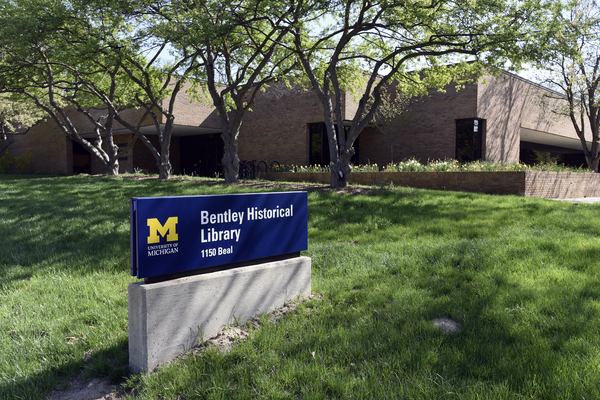University of Michigan administrative office, established as the Dean of Student Affairs in 1921, responsible for overseeing many aspects of non-academic student services and activities including at various times: counseling, financial aid, student housing, student activities and organizations, health services, student discipline, and fraternities and sororities. Records provide extensive documentation of student life.
The records of the Vice President for Student Life provide a unique perspective to the extracurricular life and customs of students at the University of Michigan and an insight to the development of the Office of the Vice President. The records span the years 1908-2014 with the bulk of the material covering 1941-2009. The material from the early years is especially rich in documenting student life from the 1920s to the 1950s. The strongest feature of this collection is in documenting the administration's response to the needs and to the demands of student, ranging from disciplining drinkers during Prohibition, dealings with fraternities up to 1960, reacting to student protests in the 1960s to the 1988 debate over the Student Code for Non-Academic Conduct, and the 2000 protest against Michigamua. The records also contain materials related to students' health, housing, organizations, and activism. The coverage of these areas varies across administrations as office reorganizations altered the focus and functions of Student Services.
This uneven documentation reflects the fact that, over time, different offices were created to handle more narrowly-defined areas of responsibility. Areas which had originally been handled by Dean Bursley under his broad conception of control over non-academic student life came to be administered by separate offices. Frequently the records of these administrative units were not included with the Vice President for Student Life records. To gain a more comprehensive understanding of student life, as refracted through the lens of University Administration, one should also refer to the records of the Housing Office and Student-Community Relations Office, and the papers of Peter Ostafin, director of housing.
The Vice President for Student Life collection consists of correspondence, reports, memos, minutes, photographs, policy decisions, and financial reports generated by both the University Administration and students. These materials are arranged in chronological series by the administrative head in charge of students' extracurricular affairs. Nine series represent records of Vice Presidents of the office: Joseph A. Bursley, 1913-1950; Erich A. Walter, 1925-1959; James A. Lewis, 1908-1964; Richard L. Cutler, 1950-1969; Barbara W. Newell, 1965-1970; Robert L. Knauss, 1962-1973; Henry Johnson, 1950-1985; Mary Ann Swain and Maureen Hartford, 1990-2005; and E. Royster Harper, 1983-2014. In addition, the collections includes a Topical Files series, 1953-1995 (records of several Vice Presidents that have been received by the Bentley in various accessions); as well as a Printed Materials series. Some intellectual reorganization of the materials was undertaken to best enable researchers to trace the changing nature of student body concerns and the development of the office itself.
The researcher should note that the strict chronological sequencing of the series was not possible. This was due in large part to a series of office reorganizations which resulted in some files created during Bursley or Walter's tenure ending up in later series. The most significant move here resulted in Lewis' series containing a good deal of Bursley and Walter materials on fraternities and student organizations. Lewis created the fraternities subseries in 1959 and compiled the student organization subseries during a May 1963, office reorganization. The researcher should also be conscious that early series contain a variety of materials which may not reflect the full scope of Bursley, Walter, or Lewis' responsibilities. Gaps are also discernible in the later series, but these are more readily fleshed out by referring to other University collections.
